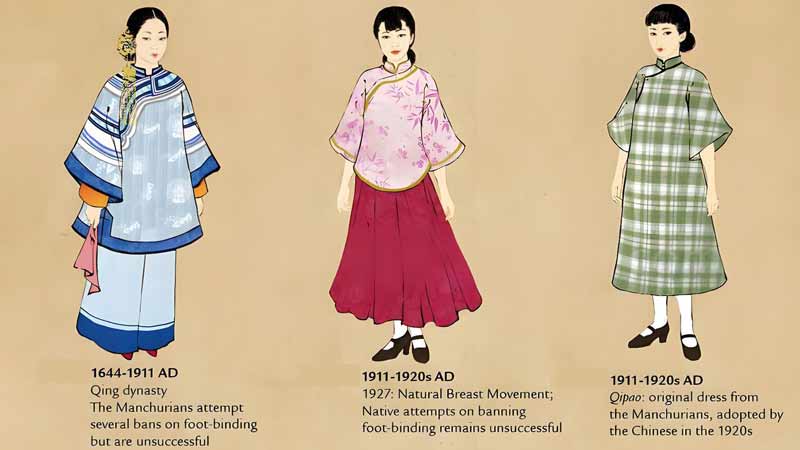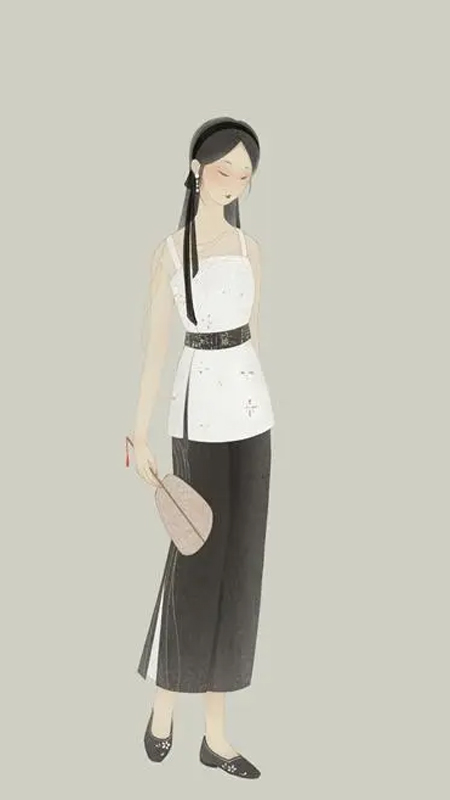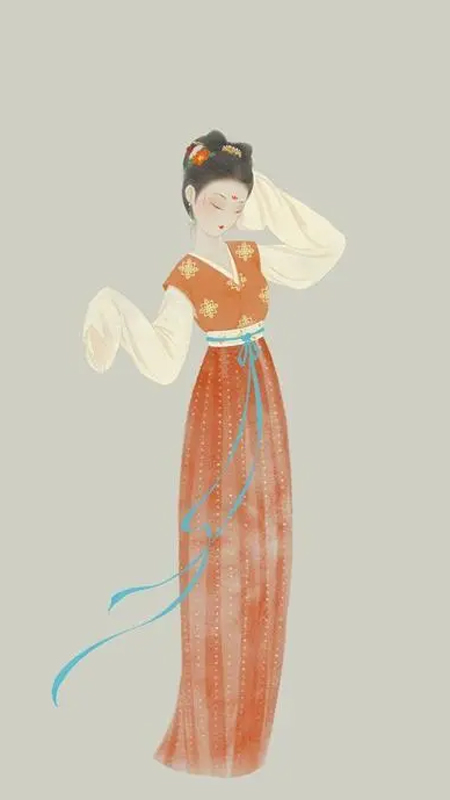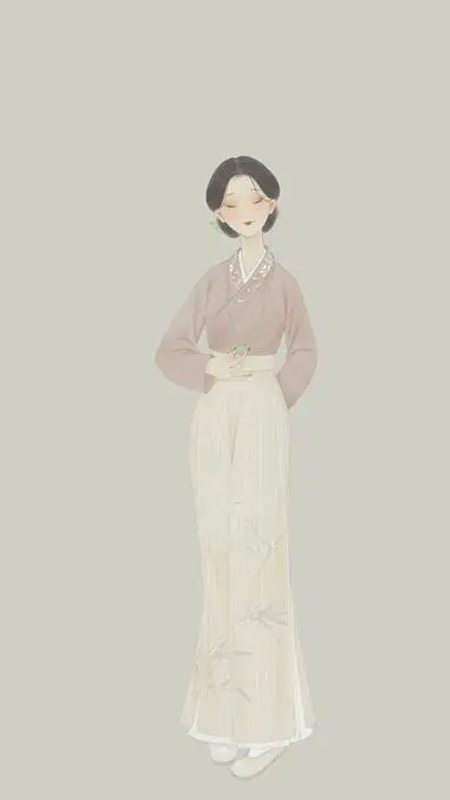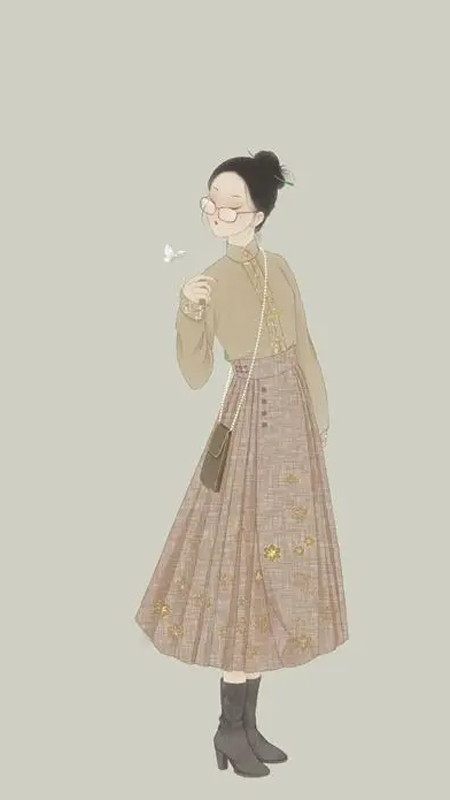Imagine silk-clad scholars from the Wei-Jin period stepping onto a bustling high-speed rail platform, or Tang dynasty noblewomen browsing a sleek concept store. China's sartorial legacy, spanning millennia from the understated elegance praised in the Book of Songs (诗经) to the dazzling Fashion Makeup (时世妆) of the High Tang, possesses an enduring vitality.
Far from being relics confined to museums, the core design philosophies – the ethereal drapery of Wei-Jin guīyī (袿衣), the flattering lines of Song bèizi (褙子), the intricate pleating of Ming horse-face skirts (马面裙, mǎmiàn qún) – are experiencing a vibrant renaissance, seamlessly woven into the fabric of contemporary global fashion.
This isn't mere revival; it's a dynamic dialogue where whispers from ancient looms inspire cutting-edge design, proving that true style transcends the confines of any single era. The flowing sleeves and structured silhouettes of the past are finding fresh expression on today’s catwalks, city sidewalks, and digital feeds, becoming powerful emblems of cultural confidence and innovative aesthetics.
Wei-Jin: Ethereal Flow Reimagined
The Wei-Jin period (220-420 AD) prized transcendence and natural grace, reflected in the iconic guīyī. This garment evolved from the deep robe (深衣, shēnyī), distinguished by its dramatic guī (圭) shaped fabric panels and trailing ribbons (襳, xiān) attached to the hem. The fluttering effect of these garments is vividly described in Ode to the Goddess of the Luo as yáng qīng guī zhī yī mí xī (扬轻袿之猗靡兮), which can be translated as "The delicate hemlines flutter gracefully, like gentle breezes caressing the air".
Often layered over a short, belted jacket (短襦), the ensemble embodied liú fēng huí xuě (流风回雪), the visual poetry of flowing wind and swirling snow. Modern interpretations capture this dreamlike quality. Lightweight, translucent fabrics like chiffon or georgette replace heavy silks, achieving that signature float.
A contemporary look might feature a fitted, small-sleeved inner layer adorned with delicate floral embroidery and light blue scrolling vine borders, subtly hinting at the structure beneath. The key modern element – the "guī" panel – could be abstracted into asymmetrical hemlines or layered sheer overlays on a skirt or dress.
An oversized, pale blue wrap top or duster coat, cinched at the waist with a wide belt, evokes the outer short jacket's silhouette and movement. The result is effortless elegance, channeling ancient serenity into modern bohemian or minimalist chic. Visual examples showcase this blend: soft, draped fabrics moving with the wearer, achieving that timeless, weightless aesthetic for today.
Tang Dynasty: Bold Glamour Revived
The Tang (618-907 AD) embraced cosmopolitan flair and unabashed opulence. Women's fashion centered on the rúqún (襦裙) combination: a top paired with a long skirt. Early Tang favored sleek, narrow sleeves and fitted skirts (小头鞋履窄衣裳), evolving towards grander volumes later (时世宽妆束). A defining Tang statement was the daring tǎnxiōng zhuāng (袒胸装) – low-cut dresses showcasing confidence. Layering was key, often adding a bànbì (半臂) – a cropped, often sleeveless over-jacket.
A Tang woman navigating today's metropolis would likely revel in bold colors and dramatic silhouettes. She might choose a vibrant, knee-length open robe in a fiery orange-red, its wide sleeves ending at the elbow, layered over a blush-pink, pleated strapless maxi dress. This modern dà xiù shān (大袖衫) hybridizes the Tang bànbì and later grand over-robes. The vibrant outer hue contrasts with a cooler lining like sky blue, perhaps echoed in a lightweight inner blouse for depth. The columnar, high-waisted dress underneath mirrors the Tang shàng jiǎn xià fēng ( 上俭下丰) silhouette – fitted above, voluminous below.
Cinched with a statement belt, the look translates Tang extravagance into contemporary evening wear or high-fashion street style, radiating the dynasty's characteristic energy and fearless embrace of beauty. Examples illustrate this vibrant translation: strong colors, luxurious fabrics, and layered silhouettes making a powerful modern statement.
Song & Ming: Elegant Structure Modernized
The Song dynasty (960-1279 AD) favored refined elegance and understated sophistication, moving away from Tang extravagance. The bèizi became ubiquitous. Evolving from the Tang bànbì, it was longer, featured full sleeves, a straight collar, and crucially, side slits starting below the armpits, offering ease of movement. Distinctions arose: elite women wore longer, wider-sleeved bèizi to signify leisure (褒博之风), while working women opted for practical, narrow-sleeved, shorter versions.
The Song aesthetic translates beautifully to modern smart-casual or minimalist fashion. Think a cropped, right-closure blouse with narrow sleeves paired with wide-leg, ankle-grazing trousers featuring subtle side slits. Low, simple block-heeled shoes in muted tones like celadon green complete the look – graceful, fluid, and effortlessly chic.
The Ming dynasty (1368-1644 AD) refined structure, exemplified by the iconic mǎmiàn qún. Characterized by its four-panel construction (two forming the flat, apron-like "horse face" front and back, flanked by pleated sections), it often featured decorative lán (襕) borders. The evolution led to the highly pleated bǎizhě mǎmiàn qún. Ming style today translates into sharp tailoring. A fitted, high-collared blouse tucked into a high-waisted horse-face skirt offers a powerful silhouette. Modern versions might simplify the pleating or abstract the "horse face" panel, but the vertical emphasis and structured elegance remain. Pairing with ankle boots or loafers grounds the historical reference firmly in contemporary style.
Visuals for Song emphasize clean lines and fluid movement, while Ming visuals highlight structured skirts and tailored tops, demonstrating how historical precision informs modern sophistication. This journey from Wei-Jin’s ethereal flow through Tang’s bold drama to Song’s quiet grace and Ming’s defined structure showcases the incredible versatility and enduring inspiration within China’s sartorial heritage. These ancient aesthetics are not costumes, but a living language of design, constantly reinterpreted to shape a uniquely modern, globally resonant style identity.
